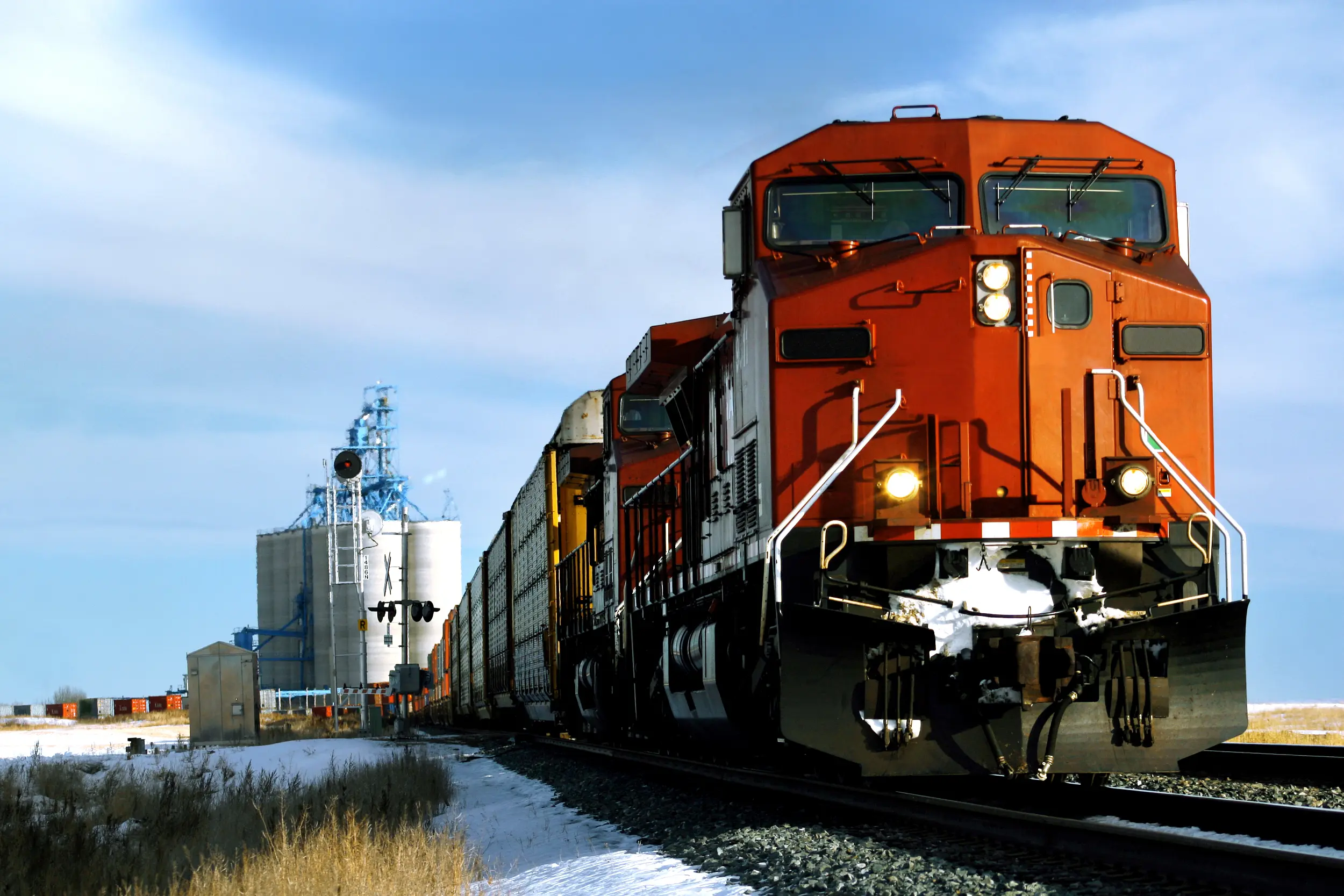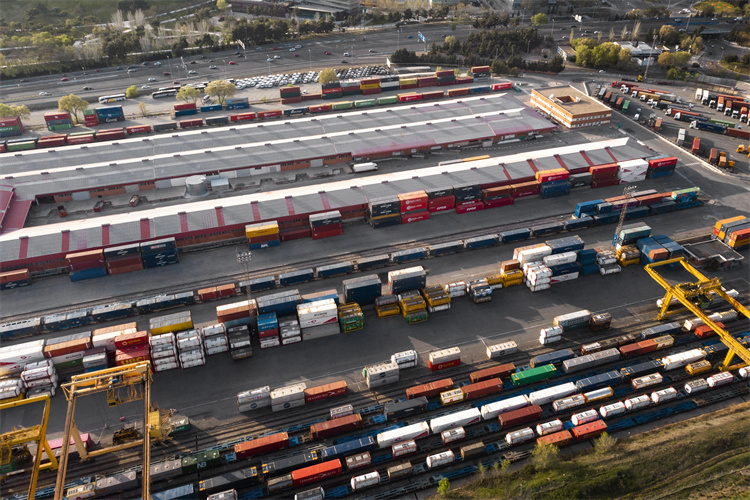JUSDA's Pioneering Efforts and Growth in China-Europe Rail Transpor

Trade between China and Europe has a rich history, dating back to the ancient Silk Road. This historic route facilitated the exchange of silk, spices, and other valuable goods, laying the groundwork for modern trade. Today, the China-Europe Express Trains symbolize this evolution, transitioning from "Silk to Semiconductors." These trains have become vital in connecting the world's largest and second-largest exporters. The service enhances trade efficiency and connectivity, echoing the Silk Road's legacy while adapting to contemporary logistics demands.
Silk to Semiconductors: Early Exploration and Pioneering Efforts by JUSDA
Initial Railway Route Exploration in 2007
In 2007, JUSDA embarked on a groundbreaking journey to explore railway routes from Shenzhen to Prague. This initiative marked the beginning of a new era in logistics, bridging the gap between Asia and Europe. The route aimed to emulate the ancient Silk Road, but with a modern twist—transitioning from Silk to Semiconductors. JUSDA's exploration involved meticulous planning and execution, setting the stage for future developments in rail transport.
Shenzhen to Prague Route
The Shenzhen to Prague route represented a significant milestone in international logistics. JUSDA's efforts focused on establishing a reliable and efficient connection between these two major cities. This route not only facilitated the movement of goods but also symbolized the potential of rail transport in global trade. By connecting Shenzhen, a hub of technological innovation, to Prague, a gateway to Europe, JUSDA laid the foundation for a new trade corridor.
Customs Clearance Experiments
JUSDA conducted extensive customs clearance experiments to streamline the process of moving goods across borders. These experiments were crucial in overcoming logistical challenges and ensuring the smooth operation of the railway route. By addressing customs issues early on, JUSDA paved the way for more efficient and reliable rail transport solutions. Their pioneering efforts in customs clearance set a precedent for future developments in international logistics.
Development of Transportation Plans
JUSDA's commitment to innovation extended beyond initial explorations. They developed comprehensive transportation plans to enhance the efficiency and reliability of rail transport. These plans focused on optimizing routes and leveraging existing infrastructure to create a seamless logistics network.
Alashankou, Manzhouli, and Erenhot Routes
JUSDA identified key routes through Alashankou, Manzhouli, and Erenhot as strategic points for rail transport. These routes served as vital links between China and Europe, facilitating the movement of goods across vast distances. By optimizing these routes, JUSDA enhanced the efficiency of rail transport, reducing transit times and costs. Their efforts contributed to the growing popularity of rail transport as a viable alternative to traditional modes of shipping.
Pioneering Achievements in Rail Transport
JUSDA's pioneering achievements in rail transport set new standards for the industry. Their innovative approach to logistics and supply chain management revolutionized the way goods were transported between continents. By focusing on efficiency and reliability, JUSDA established itself as a leader in the field, paving the way for future advancements in rail transport. Their efforts not only benefited their clients but also contributed to the overall growth and development of the global logistics industry.
Official Launch of the China-Europe Express Rail Service

Chongqing-Xinjiang-Europe Railway in 2011
In 2011, the Chongqing-Xinjiang-Europe Railway marked a significant milestone in international logistics. This railway connected Chongqing, a major city in China, to Duisburg, Germany. The route spanned over 11,000 kilometers, providing a direct link between Asia and Europe. The railway's launch symbolized the transition from "Silk to Semiconductors," as it facilitated the movement of diverse cargo types.
Types of Cargo Transported
The Chongqing-Xinjiang-Europe Railway transported a wide range of goods. Initially, the cargo consisted mainly of electronic products, machinery, and automotive parts. These items represented the shift from traditional goods like silk and spices to modern, high-tech products. The railway's ability to handle various cargo types demonstrated its versatility and importance in global trade.
Role of Electronic Products
Electronic products played a crucial role in the success of the Chongqing-Xinjiang-Europe Railway. The demand for faster and more efficient transportation of electronics drove the development of this rail service. Companies relied on the railway to transport smartphones, tablets, and other electronic devices to European markets. The railway's speed and cost-effectiveness made it an attractive option for businesses seeking to optimize their supply chains.
Wuhan-Xinjiang-Europe Railway in 2012
Following the success of the Chongqing-Xinjiang-Europe Railway, the Wuhan-Xinjiang-Europe Railway launched in 2012. This new route further expanded the China-Europe rail network, enhancing connectivity and trade efficiency. The railway connected Wuhan, a central Chinese city, to European destinations, offering an alternative path for transporting goods.
Market Share and Growth
The Wuhan-Xinjiang-Europe Railway quickly gained market share due to its strategic location and efficient operations. The railway's growth reflected the increasing demand for reliable and cost-effective transportation solutions. Businesses recognized the advantages of rail transport, leading to a surge in the volume of goods transported along this route. The railway's success contributed to the overall expansion of the China-Europe Express Rail service.
JUSDA's Contribution
JUSDA played a pivotal role in the development and success of the Wuhan-Xinjiang-Europe Railway. Their expertise in logistics and supply chain management ensured the smooth operation of the rail service. JUSDA's innovative solutions and commitment to efficiency helped optimize the transportation process, benefiting both clients and the broader logistics industry. Their contributions underscored the importance of collaboration and innovation in modern logistics.
Shift in Transportation Modes Post-2010
Rise of Smaller and Expensive Electronic Devices
The post-2010 era witnessed a significant shift in the types of electronic devices being transported. The rise of smaller, lighter, and more expensive gadgets like tablets and smartphones transformed transportation choices. Companies needed faster and more reliable methods to move these high-value items across continents.
Impact on Transportation Choices
The demand for quick delivery of electronic products led to a reevaluation of transportation modes. Businesses prioritized speed and cost-effectiveness, influencing their choice between air, sea, and rail transport. Rail transport emerged as a favorable option, offering a balance between speed and cost. It provided a middle ground, faster than sea freight and more economical than air freight. This shift highlighted the importance of adapting logistics strategies to meet evolving market demands.
Adaptation of JUSDA's Services
JUSDA responded to these changes by tailoring its services to accommodate the transportation of smaller and more valuable electronic devices. They leveraged their expertise in rail transport to offer solutions that met the specific needs of their clients. By integrating AI and IoT technologies, JUSDA enhanced operational efficiency, ensuring timely and secure delivery of goods. Their commitment to innovation allowed them to stay ahead in the competitive logistics industry, providing optimal solutions for transporting high-tech products.
Comparison of Transportation Modes
The choice of transportation mode plays a crucial role in logistics, impacting both cost and delivery time. Understanding the differences between air freight, sea freight, and rail transport helps businesses make informed decisions.
Air Freight vs. Sea Freight vs. Rail Transport
Air Freight: Offers the fastest delivery times, typically taking 5-7 days for door-to-door service from China to Europe. However, it is the most expensive option, making it suitable for urgent and high-value shipments.
Sea Freight: Provides the most economical solution, with costs significantly lower than air freight. The trade-off is longer transit times, ranging from 40-45 days, which may not be ideal for time-sensitive goods.
Rail Transport: Strikes a balance between speed and cost. The China-Europe Express Rail service takes approximately 15-20 days, offering a cost-effective alternative to air freight while being faster than sea freight.
Advantages of Rail Transport
Rail transport offers several advantages that make it an attractive option for businesses. It provides a reliable and efficient means of moving goods across vast distances, reducing transit times compared to sea freight. The cost savings compared to air freight make it a viable choice for transporting a wide range of products, including electronics, clothing, and medical supplies. JUSDA's strategic use of rail transport underscores its commitment to optimizing supply chain operations, ensuring that clients benefit from the best possible logistics solutions.
Expansion of the Rail Network

The expansion of the rail network has significantly transformed the logistics landscape, enhancing connectivity between Asia and Europe. This development has opened new avenues for trade and economic growth, particularly in Southeast Asia.
Cross-Border Land-Rail Intermodal Solution
Pingxiang to Chengdu Route
JUSDA established a cross-border land-rail intermodal solution from Pingxiang to Chengdu. This route serves as a crucial link in the China-Europe Express Rail service. By connecting Pingxiang to Chengdu, JUSDA facilitated the seamless movement of goods across borders. This strategic route enhances the efficiency of rail transport, reducing transit times and costs. The Pingxiang to Chengdu route exemplifies JUSDA's commitment to optimizing logistics operations and providing reliable transportation solutions.
Impact on Southeast Asian Market
The expansion of the rail network has had a profound impact on the Southeast Asian market. China's expertise and funding for major infrastructure projects have accelerated the development of new railways in the region. These railways have improved connectivity, enabling the efficient movement of goods between Southeast Asia and Europe. The enhanced rail network has opened new trade opportunities, boosting economic growth in Southeast Asian countries. By facilitating the import and export of goods, the rail network has strengthened the region's position in global trade.
Development of Rail Transport Solutions
Vietnamese Products to Europe
JUSDA developed innovative rail transport solutions to connect Vietnamese products to the China-Europe Express Rail service. This initiative addressed the high costs associated with air freight for shipping network switches produced in Vietnam to European customer factories. By leveraging the rail network, JUSDA ensured the timely delivery of Vietnamese products to Europe. This solution highlights the versatility and cost-effectiveness of rail transport, offering a viable alternative to traditional shipping methods.
Establishment of Logistics Channels
The establishment of logistics channels in Vietnam paved the way for the entire Southeast Asian market. JUSDA's efforts facilitated the continuous import of electronic components, fruits, rice, and other products from ASEAN countries into China. These goods were then supplied to Europe, enhancing trade efficiency and connectivity. The development of logistics channels underscores JUSDA's role in optimizing supply chain operations and supporting the growth of international trade.
Current State and Future Prospects
Advantages of the China-Europe Express Rail Service
The China-Europe Express Rail service has emerged as a vital link in global logistics, offering several advantages over traditional transportation modes.
Speed and Cost Efficiency
The rail service provides a balanced solution between speed and cost. Trains traveling from Xi'an, Shaanxi province, to Duisburg, Germany, complete the journey in approximately 10 days. This efficiency makes rail transport faster than sea freight, which can take up to 45 days, and more cost-effective than air freight, which, although quicker, incurs higher expenses. The rail service has become a preferred choice for businesses seeking to optimize their supply chains without compromising on delivery times.
Diversification of Cargo Types
Since its inception, the China-Europe Express Rail service has transported over 50,000 types of goods. Initially dominated by electronic products, the cargo now includes clothing, small commodities, and medical supplies. This diversification reflects the rail service's adaptability to market demands and its role in facilitating a wide range of trade activities between Asia and Europe. The ability to carry various goods enhances the service's appeal to different industries, contributing to its growing significance in international trade.
JUSDA's Ongoing Contributions
JUSDA continues to play a crucial role in the development and optimization of the China-Europe Express Rail service, ensuring its ongoing success and expansion.
Return Trip Cargo Transportation
JUSDA actively develops solutions for return trip cargo transportation, maximizing the efficiency of the rail service. By matching space efficiently, JUSDA ensures that trains returning to China are utilized effectively, reducing empty runs and optimizing resource use. This approach not only enhances the economic viability of the rail service but also supports sustainable logistics practices.
Supply Chain Optimization
JUSDA leverages its expertise in logistics and supply chain management to optimize operations along the China-Europe Express Rail routes. By integrating advanced technologies such as AI and IoT, JUSDA enhances real-time tracking and coordination, ensuring timely and secure delivery of goods. Their commitment to innovation and efficiency positions JUSDA as a leader in the logistics industry, providing clients with tailored solutions that meet their specific needs.
The China-Europe Express Rail service continues to evolve, bridging geographical and economic distances between regions. As it expands its reach and diversifies its offerings, the service plays a pivotal role in fostering mutual benefits and reciprocity between China and Europe. JUSDA's ongoing contributions underscore the importance of collaboration and innovation in shaping the future of global logistics.

JUSDA Solutions
To provide you with professional solutions and quotations.
The China-Europe Express Rail service stands as a pivotal component in global logistics, offering significant advantages over traditional transport modes. It provides a fast, cost-effective, and environmentally friendly alternative to air and sea freight. The rail service connects over 223 cities in Europe and more than 100 in Asia, enhancing trade efficiency and economic growth. Its ability to transport diverse cargo types, from electronics to medical supplies, underscores its adaptability and importance in international trade. As new routes and technologies emerge, the future prospects for the China-Europe Railway Express remain promising, continuing to support global supply chains and economic development.
See Also
Advancements in Logistics Tech: An Expedition to Tomorrow
Efficient Strategies for Advanced Manufacturing's Logistics Challenges
Artificial Intelligence in Supply Chain: Transforming Future Logistics
Ready for the Future? Delving into Cutting-Edge Transport Tech for Supply Chains
Creative Approaches: Revealing Supplier Partnerships in Global E-commerce
